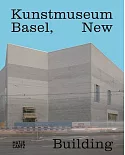Building Histories offers innovative accounts of five medieval monuments in Delhi—the Red Fort, Rasul Numa dargah, Jama Masjid, Purana Qila, and Qutb complex—tracing their modern lives
from the nineteenth century into the twentieth.
?Mrinalini Rajagopalan argues that the modern construction of the history of these monuments entailed the careful selection, manipulation, and regulation of the past by both the colonial and
later postcolonial states. Although framed as objective “archival” truths, these histories were meant to erase or marginalize the powerful and persistent affective appropriations of the
monuments by groups who often existed outside of the center of power. By analyzing these archival and affective histories together, Rajagopalan works to redefine the historic monument—far
from a symbol of a specific past, the monument is shown in Building Histories to be a culturally mutable object with multiple stories to tell.





















